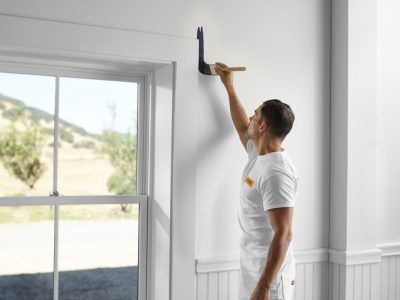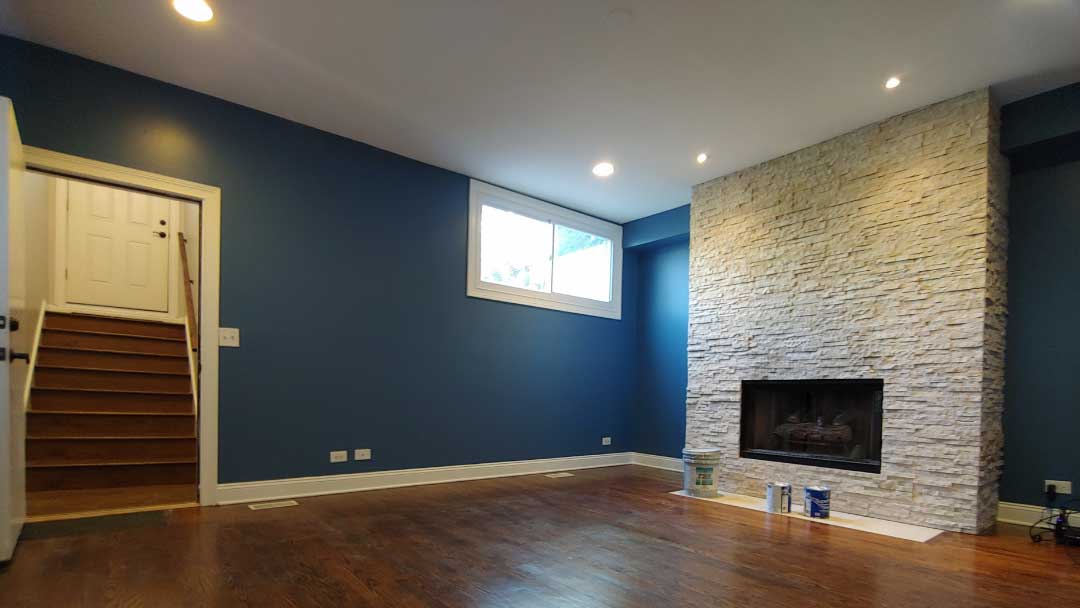Cleveland Metro Painting Specialists: Your Experts for Professional Painting Services
Cleveland Metro Painting Specialists: Your Experts for Professional Painting Services
Blog Article
Enhance Your Inside Layout With Comprehensive Shade Examination
The assimilation of color assessment right into interior decoration presents an one-of-a-kind opportunity to fine-tune and boost the visual and emotional vibration of an area. By involving with a seasoned shade consultant, you can navigate the intricacies of color option, making certain that your options not just enhance building features however additionally reverberate with individual design and mental impact. This strategic collaboration can considerably influence the overall atmosphere of your atmosphere, cultivating a sense of harmony and purpose. Nevertheless, comprehending the nuances of this procedure is necessary-- what vital elements should be thought about to attain optimal outcomes?
Advantages of Color Appointment

Additionally, shade appointment help in making the most of natural light and maximizing spatial understanding. Lighter hues can make an area show up more extensive, while darker tones produce an intimate setting. Cleveland Metro Painting Specialists. This critical application of color can significantly influence the overall ambiance of any indoor area
Furthermore, specialist experts have a thorough understanding of ageless classics and present patterns, making sure that the selected colors will certainly continue to be appealing in time. This foresight can save customers from expensive redesigns in the future. Lastly, shade consultation encourages customers by supplying them with a clear vision and direction, fostering self-confidence in their design choices and inevitably leading to an extra effective and rewarding interior decoration result.
Recognizing Color Psychology
The value of shade psychology in interior style can not be overemphasized, as it digs right into the emotional and psychological impacts that numerous shades can evoke in individuals. Shades can influence state of mind, behavior, and also productivity, making them a critical factor to consider in any kind of design job.
For circumstances, warm colors such as red, orange, and yellow are frequently linked with power and warmth. They can promote sensations of excitement and comfort, making them ideal for social rooms like living rooms or kitchen areas. Conversely, great colors like blue, eco-friendly, and purple often tend to evoke peace and peace, making them optimal for bed rooms or reflection locations.
Additionally, the use of neutral tones can produce a well balanced setting by permitting the bolder shades to attract attention without overwhelming the senses. Comprehending these psychological impacts allows designers to develop rooms that not just look aesthetically pleasing but likewise advertise psychological health.
Including shade psychology into interior style includes a thoughtful choice of shades tailored to the intended function of each room, eventually improving the overall experience for its residents. This awareness is important for accomplishing a useful and unified interior environment.
The Shade Wheel Explained
Understanding the partnerships in between colors is vital for efficient interior design, and the shade wheel offers as a beneficial device in this process. The shade wheel, developed by Isaac Newton in the 17th century, shows the spectrum of shades arranged in a round style. It makes up primaries-- red, blue, and yellow-- that can not be developed by blending various other colors. Second colors, formed by integrating primaries, include environment-friendly, orange, and purple. Tertiary colors arise from mixing a key and a second color, leading to colors such as red-orange and turquoise.
The shade wheel helps developers grasp the partnerships between colors, including complementary, similar, and triadic schemes. Complementary shades, located opposite each various other on the wheel, create lively contrasts that can invigorate a space. Comparable shades, located alongside one an additional, provide a harmonious and natural appearance. Triadic systems use three uniformly spaced shades, supplying equilibrium and aesthetic passion.
Using the color wheel in find here interior decoration not just boosts visual appeal but also evokes specific emotions and atmospheres, making it an important reference for shade assessment. Comprehending these connections eventually empowers developers to produce spaces that are both aesthetically fascinating and useful.
Selecting the Right Palette
Usually, picking the right palette is a crucial consider accomplishing an effective indoor design task. An appropriate color pattern can combine an area, improve its features, and stimulate wanted emotions. To begin, consider the objective of the space. Different rooms serve diverse features and call for palettes that mirror their designated use; for example, serene colors such as soft blues or environment-friendlies work well in bedrooms, advertising relaxation.
Next, take into consideration the natural light readily available. Light can significantly alter how shades appear, so it is important to evaluate the area at various times of the day. Additionally, take into consideration existing architectural components and furnishings. A harmonious combination needs to enhance these attributes, developing a cohesive appearance throughout the room.
When picking shades, make use of the 60-30-10 rule, which suggests that 60% of the area ought to be a dominant color, 30% an additional color, and 10% an accent color. This proportion ensures balance and visual interest (Cleveland Metro Painting Specialists). Finally, sample shades on the wall surfaces prior to devoting, as this enables you to see exactly how the colors communicate with each other and the total setting they produce in your interior design job.
Dealing With a Shade Professional

When working with a color professional, the procedure typically begins with an initial consultation. Throughout this conference, you'll discuss your vision, preferences, and the existing elements in your room. The professional will certainly analyze your requirements and may recommend specific shade schemes that align with your Find Out More objectives.
After establishing a direction, the consultant will certainly give samples and visual help to assist you visualize the proposed color pattern. This step is critical, as shades can appear differently under differing lights problems.
Additionally, a shade expert can direct you in picking corresponding furnishings, artwork, and devices to harmonize with your picked scheme. By teaming up very closely, you can accomplish a refined visual that this page elevates your insides and creates a welcoming atmosphere. Ultimately, the proficiency of a color professional can substantially boost the general influence of your design project.
Final Thought
In summary, comprehensive color assessment functions as a crucial device for improving indoor design. By leveraging professional expertise of color psychology and spatial characteristics, a customized color combination can be created to evoke certain feelings and create an unified environment. This tactical method not only promotes a cohesive design narrative yet likewise reduces the danger of pricey redesigns. Ultimately, involving with a color specialist makes sure an informed and aesthetically pleasing end result, raising the total experience of the space.
By engaging with a skilled shade expert, you can browse the complexities of shade choice, making sure that your options not only enhance building features yet likewise resonate with individual design and mental impact. It makes up key shades-- red, blue, and yellow-- that can not be produced by mixing various other shades.The color wheel assists developers understand the relationships in between colors, consisting of complementary, comparable, and triadic schemes.When selecting shades, use the 60-30-10 guideline, which recommends that 60% of the room ought to be a leading shade, 30% an additional shade, and 10% an accent color. By leveraging professional knowledge of color psychology and spatial characteristics, a tailored color palette can be created to stimulate certain feelings and develop a harmonious atmosphere.
Report this page